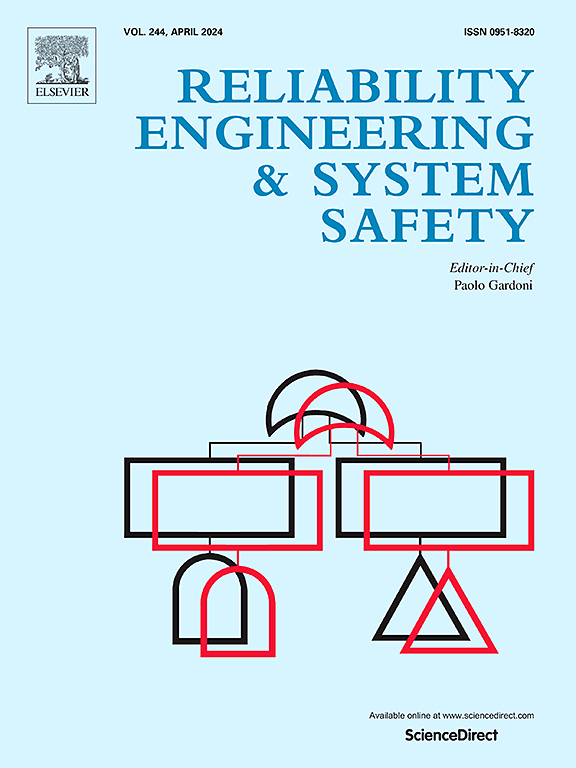Non-constant imperfect maintenance effects in Inverse Gaussian degradation models for multiple repairable systems
IF 11
1区 工程技术
Q1 ENGINEERING, INDUSTRIAL
引用次数: 0
Abstract
This paper proposes a degradation model tailored for multiple repairable systems subject to imperfect maintenance actions, incorporating three key assumptions: (i) the underlying degradation process follows an Inverse Gaussian distribution; (ii) the non-constant effects of imperfect maintenance are modeled using the Arithmetic Reduction of Degradation with memory one framework; and (iii) systems undergo regular inspections, with degradation levels measured immediately before, after, and between inspections. This approach provides a flexible representation of degradation dynamics while accounting for the imperfect nature of maintenance interventions and their evolving impact over time. To evaluate the proposed model, we conduct a simulation study to assess the asymptotic properties of the parameter estimators obtained via the maximum likelihood method. The study demonstrates the robustness and reliability of the estimation process, highlighting the model’s ability to capture the degradation behavior accurately. Additionally, a practical application is presented using real-world data from LASER device degradation under various maintenance scenarios. The ability to account for the effects of imperfect maintenance is especially important as, in practice, repairs rarely return systems to a like-new condition, nor do they leave them as degraded as they were before. The proposed framework contributes to the advancement of degradation modeling, offering a robust tool for reliability engineers and practitioners dealing with repairable systems and imperfect maintenance conditions.
多可修系统反高斯退化模型中的非常不完全维护效应
本文提出了一个针对不完全维护行为下的多个可修复系统的退化模型,该模型包含三个关键假设:(i)潜在的退化过程遵循逆高斯分布;(ii)不完全维护的非恒定效应使用带有记忆1的算术退化减少(ARD1)框架建模;(iii)定期对系统进行检查,并在检查前后和检查之间立即测量退化程度。这种方法提供了退化动力学的灵活表示,同时考虑到维护干预的不完美性质及其随时间变化的影响。为了评估所提出的模型,我们进行了模拟研究,以评估通过最大似然方法获得的参数估计量的渐近性质。该研究证明了估计过程的鲁棒性和可靠性,突出了模型准确捕获退化行为的能力。此外,还介绍了在各种维护场景下激光器件退化的实际应用。考虑到不完善维护的影响的能力尤为重要,因为在实践中,维修很少能使系统恢复到近乎全新的状态,也不会使系统像以前那样退化。提出的框架有助于退化建模的发展,为可靠性工程师和从业者处理可修复系统和不完善的维护条件提供了一个强大的工具。
本文章由计算机程序翻译,如有差异,请以英文原文为准。
求助全文
约1分钟内获得全文
求助全文
来源期刊

Reliability Engineering & System Safety
管理科学-工程:工业
CiteScore
15.20
自引率
39.50%
发文量
621
审稿时长
67 days
期刊介绍:
Elsevier publishes Reliability Engineering & System Safety in association with the European Safety and Reliability Association and the Safety Engineering and Risk Analysis Division. The international journal is devoted to developing and applying methods to enhance the safety and reliability of complex technological systems, like nuclear power plants, chemical plants, hazardous waste facilities, space systems, offshore and maritime systems, transportation systems, constructed infrastructure, and manufacturing plants. The journal normally publishes only articles that involve the analysis of substantive problems related to the reliability of complex systems or present techniques and/or theoretical results that have a discernable relationship to the solution of such problems. An important aim is to balance academic material and practical applications.
 求助内容:
求助内容: 应助结果提醒方式:
应助结果提醒方式:


